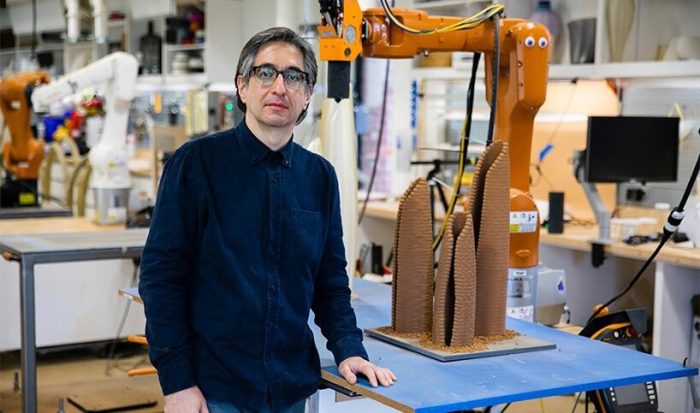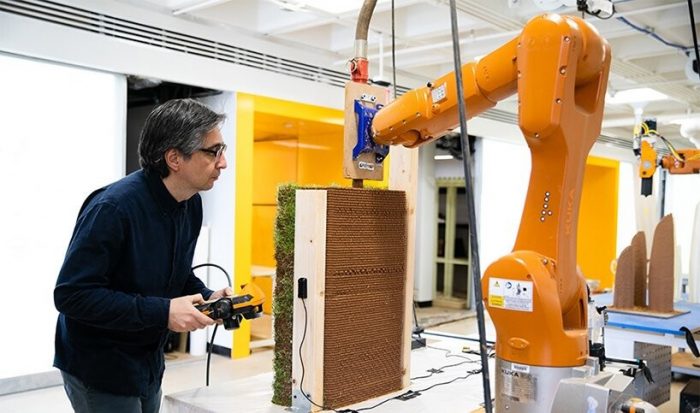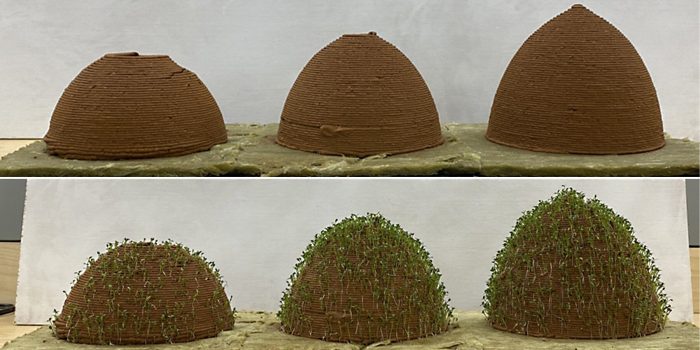3D Printed Soil Structures:
An innovative bioconstruction technique has been created by a team of researchers at the University of Virginia, and it may alter the way in which future structures are created. The project, which was detailed in the peer-reviewed journal “Additive Manufacturing,” aimed to physically combine nature and architecture as a step toward more environmentally friendly construction techniques. The outcome is a collection of intricately designed flowering structures that were 3D printed out of soil and seeds. These volumes may very possibly be used as the foundation for future homes if they are expanded at a higher scale.
Ji Ma, an assistant professor at the University of Virginia’s School of Engineering and Applied Science, collaborated with research professor David Carr from the Department of Environmental Sciences, assistant professor Ehsan Baharlou from the School of Architecture, and his student Spencer Barnes to conduct the experiment.
Through this project, the UVA research team added to the rapidly developing trend of 3D printing, a technology that is demonstrating its ability to meet the increasing demand for more affordable housing, green construction methods, and a circular economy on a worldwide scale.
Ehsan Baharlou says that the transition to soil-based “inks” was made in order to gain more advantages from circular additive manufacturing. The only electricity required is to transfer the material and power a pump during printing; otherwise, we work with water and local plants and soils. We can recycle and re-use the material in the subsequent batch of inks if a printed piece isn’t needed or isn’t of the right quality.
The structures were able to grow plants after numerous testing cycles on the soil combination, but not just any plants. “Soil that has been 3D printed tends to lose water more quickly and retains its hold on the water it has,” Ji Ma says, “We need to include plants that thrive in drier areas since 3D printing makes the environment around the plant drier. The dirt becomes compacted, which is why we believe this to be the case. Air bubbles are forced out of the nozzle as the soil is forced through it. The soil holds onto water more firmly as air bubbles are lost.

Ehsan Baharlou, Assistant Professor at UVA’s School of Architecture, Photography: Tom Daly via University of Virginia
The ultimate objective is to promote procedures that use locally sourced bio-materials to lessen a building’s carbon footprint. Moving away from traditional resources that aren’t recyclable, reusable, or flexible involves doing just that. Therefore, bioconstruction opens the door to low-cost, low-energy, and environmentally beneficial solutions in the fields of engineering and architecture.



